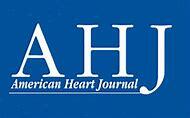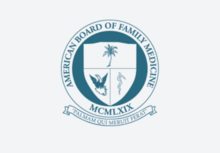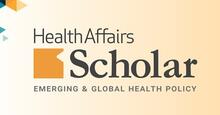Publications
2025
BACKGROUND: Use of pulmonary vein isolation (PVI) to treat atrial fibrillation continues to increase. Despite great interest in leveraging administrative data for real-world analyses, contemporary procedural codes for identifying PVI have not been evaluated.
METHODS AND RESULTS: In this observational retrospective cohort study, inpatient PVIs were identified among US Medicare fee-for-service beneficiaries using Current Procedural Terminology (CPT) code 93656 in Carrier Line Files. Each patient was matched with their claims from Medicare Provider Analysis and Review to compare CPT with International Classification of Diseases, Tenth Revision, Procedure Coding System (ICD-10-PCS) claims submitted by health care facilities to bill for PVIs. We performed the reverse for commonly matched ICD-10-PCS codes, to identify corresponding CPT-billed procedures. Finally, we reviewed institutional cases for additional comparison of CPT and ICD-10-PCS assignation for PVI. We identified 25 617 inpatient PVIs from January 2017 to December 2021, of which 18 165 (71%) were linked to Medicare Provider Analysis and Review. Of these, 16 672 (92%) were billed as ICD-10-PCS 02583ZZ: "Destruction of Conduction Mechanism, Percutaneous Approach." The reverse process yielded heterogeneous results: among 75 003 procedures billed as ICD-10-PCS 02583ZZ, only 15 691 (21%) matched with CPT 93656 (PVI), as several other unrelated procedures were billed under this ICD-10-PCS code. Institutional case review confirmed the greater specificity of CPT codes.
CONCLUSIONS: The ICD-10-PCS code associated with CPT-billed PVI procedures actually referred to ablation of the atrioventricular junction. Yet this ICD-10-PCS code also matched with a wide range of other procedures distinct from PVI. We conclude that ICD-10-PCS codes alone are not sensitive nor specific for identifying PVI in claims and cannot be reliably used in isolation for health services research on this important procedure.
Despite advancements in diagnostics and therapeutics for cardiovascular disease, significant health disparities persist among patients from historically marginalized racial and ethnic groups, women, individuals who are socioeconomically under-resourced or underinsured, and those living in rural communities. While transcatheter interventions have revolutionized the treatment landscape in cardiology, populations bearing the greatest burden of disease continue to face inequitable access and poorer outcomes. A notable gap in the literature concerns the role of modern approaches to cardiovascular device innovation in shaping and perpetuating health disparities. Health equity has been declared one of the top strategic initiatives for 2022 to 2025 by the Food and Drug Administration Center for Devices and Radiological Health, underscoring the need for greater attention, dialogue, and targeted interventions in this space. This narrative review uses the cardiovascular device life cycle as a conceptual framework to enhance understanding and guide future efforts to mitigate disparities in the field of interventional cardiology. Drawing on illustrative examples from interventional cardiology, we examine current practices in cardiovascular device regulation and approval, clinical trial evaluation, adoption patterns, and postprocedural outcomes with the aim of uncovering potential mechanisms of disparities and identifying opportunities for targeted interventions.
IMPORTANCE: Cardiovascular disease is the leading cause of death in the US. However, it remains unclear how the burden of cardiovascular events in the US compares with that of other high-income countries with distinct health care systems like Denmark, both overall and by income.
OBJECTIVE: To compare cardiovascular hospitalization rates (acute myocardial infarction [MI], heart failure [HF], ischemic stroke) and associated outcomes among adults 65 years or older, overall and by income, between the US and Denmark.
DESIGN, SETTING, AND PARTICIPANTS: This population-based cross-sectional study used national data from the US and Denmark from January 1, 2021, to January 1, 2022. The study population included all Medicare beneficiaries 65 years or older in the US and all adults 65 years or older in Denmark.
MAIN OUTCOMES AND MEASURES: The primary outcome was age- and sex-standardized hospitalization rates for MI, HF, and ischemic stroke, as well as 30-day all-cause mortality rates.
RESULTS: The US study population included 58 614 110 adults 65 years or older (mean [SE] age, 74.6 [7.7] years; 32 179 146 female [54.9%]) of whom 1 171 058 (2.0%) were hospitalized for a cardiovascular event. The Danish study population included 1 176 542 adults 65 years or older (mean [SE] age, 75.3 [7.1] years; 634 217 female [53.9%]) of whom 16 305 (1.4%) were hospitalized with a cardiovascular event. The overall age- and sex-standardized cardiovascular hospitalization rate was significantly higher in the US compared with Denmark (risk ratio [RR], 1.50; 95% CI, 1.47-1.52), as were associated 30-day all-cause mortality rates (RR, 1.12; 95% CI, 1.06-1.17). Across conditions, the risk of hospitalization for MI (RR, 1.56; 95% CI, 1.51-1.61) and HF (RR, 2.37; 95% CI, 2.31-2.43) was significantly higher in the US compared with Denmark, whereas hospitalizations for ischemic stroke were lower (RR, 0.90; 95% CI, 0.88-0.93). Overall cardiovascular hospitalization rates in the US were more than 2-fold higher among low-income adults compared with higher-income adults (RR, 2.38; 95% CI, 2.25-2.47), whereas the magnitude of income-based disparities was smaller in Denmark (RR, 1.45; 95% CI, 1.39-1.50).
CONCLUSIONS AND RELEVANCE: In this international cross-sectional study, cardiovascular hospitalization rates were significantly higher in the US compared with Denmark. There were income-based differences in the burden of cardiovascular hospitalizations in both countries, although the magnitude of these disparities was much greater in the US.





